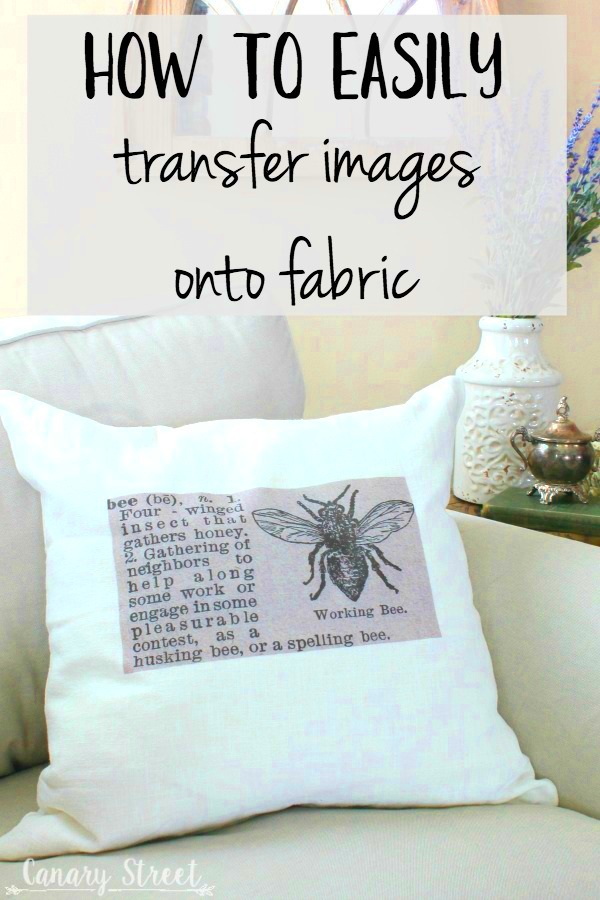Transferring images onto fabric is a fun and creative way to personalize items like t-shirts, bags, or home décor. The process involves applying an image or design onto a fabric surface, resulting in a unique and stylish look. There are various techniques for this, including heat transfer, inkjet transfer, and screen printing. Each method has its own set of steps and required materials.To get started, it’s essential to understand how each transfer method works. This knowledge helps you choose the right technique based on the fabric type and the desired outcome. The basics include:
- Heat Transfer: Uses heat and pressure to transfer an image from a special paper onto fabric.
- Inkjet Transfer: Involves printing your image onto transfer paper, which is then applied to the fabric.
- Screen Printing: A more advanced method using stencils and ink to create designs.
By familiarizing yourself with these basics, you'll be better equipped to select the right approach for your projects.
Gathering the Necessary Materials for Image Transfer
Before diving into the image transfer process, it’s important to gather all the necessary materials. Having everything ready will ensure a smooth and successful project. Here’s a list of what you might need:
- Fabric: Choose the type of fabric based on your project (cotton, polyester, canvas, etc.).
- Transfer Paper: Select the appropriate transfer paper for your printer (inkjet or laser).
- Printer: A standard inkjet or laser printer will work for most transfer methods.
- Iron or Heat Press: For heat transfer methods, a household iron or a heat press machine is essential.
- Scissors: To cut out your design from the transfer paper.
- Protective Sheet: Use parchment paper or a similar sheet to protect your fabric while transferring.
Gathering these materials in advance helps to avoid interruptions during the process and allows you to focus on creating a beautiful fabric design.
Choosing the Right Image for Fabric Transfer
The image you select plays a crucial role in the success of your fabric transfer project. Here are some tips to help you choose the right image:
- Resolution: Use high-resolution images (at least 300 DPI) for clear, sharp prints.
- Colors: Consider the color of the fabric. A bright image will stand out on a light fabric, while darker images are better suited for dark fabrics.
- Design Complexity: Simple designs with fewer colors transfer better than intricate images with many details.
- Format: Choose images in formats like JPEG, PNG, or TIFF that maintain quality when printed.
Once you’ve chosen your image, you might need to adjust it using image editing software. Cropping, resizing, or adding text can enhance the final look. Remember to reverse your image if you're using heat transfer, as it will appear flipped on the fabric. With the right image in hand, you’re well on your way to a successful fabric transfer project.
Step-by-Step Process for Transferring Images onto Fabric
Transferring images onto fabric can seem daunting at first, but with a clear step-by-step process, you'll find it straightforward and enjoyable. Here's how to do it, whether you're using heat transfer, inkjet transfer, or screen printing.
- Prepare Your Image: Choose and edit your image as needed. Make sure it's in the correct format and resolution.
- Print the Image:
Creative Ideas for Using Transferred Images on Fabric
Transferring images onto fabric opens up a world of creative possibilities! Whether you’re looking to personalize your belongings or create unique gifts, there are so many fun ways to use your transferred images. Here are some exciting ideas to inspire your next project:- Custom T-Shirts: Design unique t-shirts for family reunions, parties, or personal use. Create matching designs for events or fun outings.
- Personalized Tote Bags: Transfer your favorite quotes, artwork, or photos onto tote bags for a stylish and functional accessory.
- Decorative Pillows: Use transferred images to create beautiful throw pillows that match your home décor. Add a personal touch to your living space!
- Quilts and Blankets: Incorporate family photos or meaningful images into quilts, making a cozy keepsake full of memories.
- Unique Home Décor: Transfer images onto fabric wall hangings, curtains, or table runners to add a personalized touch to your home.
- Gift Ideas: Create custom fabric items as thoughtful gifts for birthdays, holidays, or special occasions. A personalized item shows you care!
These ideas are just the tip of the iceberg! The possibilities are endless when you start transferring images onto fabric, allowing you to express your creativity in many ways.Frequently Asked Questions about Image Transfer onto Fabric
Image transfer can raise many questions, especially for beginners. Here are some common queries along with helpful answers to guide you through the process:- What type of fabric is best for image transfer? Cotton and polyester fabrics are great choices. Cotton provides a nice texture, while polyester offers vibrant color results.
- Can I use any printer for image transfer? Yes, but make sure to choose the correct transfer paper for your printer type—inkjet or laser.
- How do I know if my image is high resolution? A high-resolution image typically has at least 300 DPI (dots per inch). Check the image properties before printing.
- Can I wash the fabric after transferring the image? Yes, but be sure to wash it inside out in cold water to preserve the image quality.
- How long will the transferred image last? With proper care, transferred images can last for years. Regular washing and drying may cause fading over time.
These FAQs should help clarify some of your concerns about image transfer. Remember, practice makes perfect!Conclusion on Image Transfer Techniques
In conclusion, transferring images onto fabric is a delightful way to personalize your belongings and unleash your creativity. By understanding different transfer methods, gathering the necessary materials, and selecting the right images, you can create stunning and unique items such as custom t-shirts, tote bags, and home décor. With a straightforward step-by-step approach and answers to common questions, you’re well-equipped to embark on this exciting craft. Whether for personal use or thoughtful gifts, the possibilities for expression through fabric transfer are truly limitless.

 admin
admin








